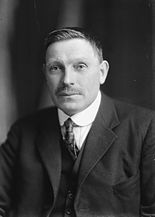New Zealand general election, 1938
|
|
|||||||||||||||||||||||||||||||||||||
|---|---|---|---|---|---|---|---|---|---|---|---|---|---|---|---|---|---|---|---|---|---|---|---|---|---|---|---|---|---|---|---|---|---|---|---|---|---|
|
|||||||||||||||||||||||||||||||||||||
|
|
|||||||||||||||||||||||||||||||||||||
|
All 80 seats in the New Zealand Parliament 41 seats were needed for a majority |
|||||||||||||||||||||||||||||||||||||
|
|||||||||||||||||||||||||||||||||||||
|
|||||||||||||||||||||||||||||||||||||
The 1938 New Zealand general election was a nationwide vote to determine the shape of the New Zealand Parliament's 26th term. It resulted in the governing Labour Party being re-elected, although the newly founded National Party gained a certain amount of ground.
The Labour Party had won a resounding victory in the 1935 elections, winning fifty-three seats. Shortly after the elections, the two Ratana-aligned MPs also merged into the Labour Party, giving Labour a total of fifty-five seats. The government, a coalition of the United Party and the Reform Party, had won only nineteen seats. Shortly after their defeat, United and Reform agreed to merge into the National Party, which positioned itself as the only alternative to the "socialist" Labour Party. However, Labour remained popular with the public, and the Prime Minister, Michael Joseph Savage, was widely praised for his welfare reform. The leadership of the National Party, by contrast, was closely associated by the public with the Great Depression, and struggled to gain traction.
The date for the main 1938 elections was 15 October, a Saturday. Elections to the four Maori electorates were held the day before. 995,173 people were registered to vote, and there was a turnout of 92.9%. This turnout was the highest ever recorded at that point, although it was later exceeded in the two elections after World War II and in the 1984 elections. The number of seats being contested was 80, a number which had been fixed since 1902.
...
Wikipedia


